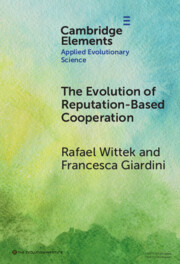Element contents
The Evolution of Reputation-Based Cooperation
Published online by Cambridge University Press: 22 November 2023
Summary
- Type
- Element
- Information
- Online ISBN: 9781009217521Publisher: Cambridge University PressPrint publication: 21 December 2023
References
- 7
- Cited by

